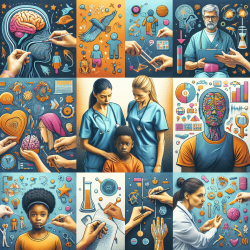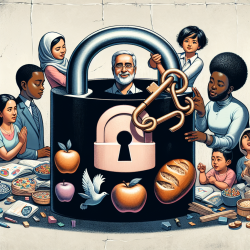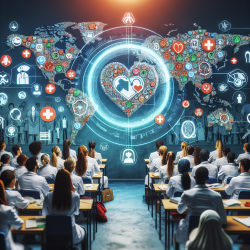Introduction
In the realm of speech-language pathology, understanding the nuances of language recovery post-stroke is pivotal. The study titled "Naming errors and dysfunctional tissue metrics predict language recovery after acute left hemisphere stroke" offers significant insights into how specific types of naming errors and brain tissue integrity can forecast language recovery outcomes. This blog aims to translate these findings into practical strategies for practitioners, particularly those working with children, to enhance their therapeutic approaches.
The Study's Core Findings
The research involved 148 individuals who had experienced an acute left hemisphere stroke. The study focused on analyzing naming errors—categorized into semantic, phonological, mixed, and unrelated types—and dysfunctional brain tissue metrics. The key takeaway was that a higher proportion of semantic errors correlated with better acute naming abilities, while a higher proportion of unrelated errors indicated poorer accuracy. Over time, while naming and global language skills improved, the error patterns remained consistent.
Implications for Practitioners
For practitioners, particularly those involved in pediatric therapy, the study underscores the importance of early error type identification. By focusing on the nature of naming errors, therapists can tailor interventions more effectively. Here are some actionable insights:
- Focus on Semantic Errors: Encourage activities that enhance semantic processing, such as category sorting and semantic feature analysis, to leverage the natural recovery trajectory indicated by semantic errors.
- Address Unrelated Errors: Develop targeted strategies to reduce unrelated errors, such as using visual aids or context-rich prompts, to improve naming accuracy and overall language recovery.
- Utilize Neuroimaging Data: Incorporate neuroimaging insights into therapy planning. Understanding the integrity of brain structures like the left angular gyrus can guide the customization of therapeutic approaches.
Encouraging Further Research
The study opens avenues for further exploration, particularly in understanding the underlying causes of different error types and their specific impact on recovery. Practitioners are encouraged to engage in collaborative research efforts, potentially partnering with academic institutions, to deepen the understanding of these dynamics.
Conclusion
By integrating the findings from this study into practice, speech-language pathologists can enhance their therapeutic strategies, leading to improved outcomes for children recovering from stroke. The focus on data-driven decisions and personalized therapy aligns with the overarching goal of optimizing language recovery.
To read the original research paper, please follow this link: Naming errors and dysfunctional tissue metrics predict language recovery after acute left hemisphere stroke.










